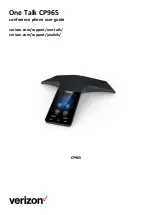
17
Projecting the DECT network
Interference from other cells and networks
DECT is very robust against interference from other wireless networks. For example, co-
existence with WLAN is not a problem. Most other asynchronous DECT single base sta-
tions do not present a problem either.
Problems may occur in special cases, such as an environment where there is a very high
level of DECT usage. This applies when there are co-existing asynchronous DECT base sta-
tions but, even more so, when base stations have been installed too close together to
cover a hotspot, for example.
Despite sufficient signal strength, the following interference can occur:
u
Unexpected termination of the connection
u
Loss of synchronisation of handsets
u
Poor voice quality
¤
When interference occurs because base stations are installed too closely together, try
to resolve the problem with the measures described in the
section (increase
the distances, use obstacles to absorb the interference,
)
¤
If you have found other DECT sources, check whether you can switch them off, relocate
them or integrate them in your DECT network.
Summary
Wireless traffic interference can have many causes that cannot all be determined in
advance, that increase or decrease due to mutual influences and that can change during
operation.
Therefore, the actual influence of interference factors on reception and voice quality can
only be determined by taking measurements. However, the measurements also only pro-
vide an image of the wireless network at the time of measurement. We therefore recom-
mend that when you plan the DECT network areas where interference can be expected,
you err on the side of caution when you interpret the limit values.
VoIPon www.voipon.co.uk [email protected] Tel: +44 (0)1245 808195 Fax: +44 (0)1245 808299
















































